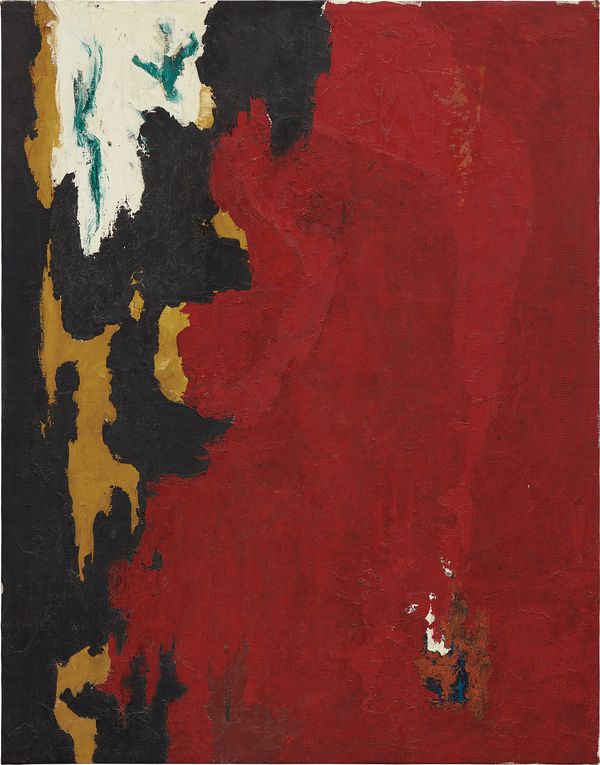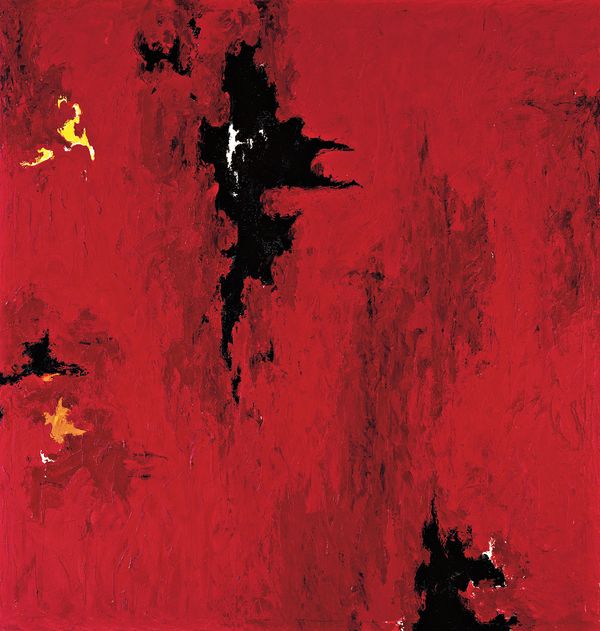Clyfford Still Untitled, circa 1948-1949
"You can turn the lights out. The paintings will carry their own fire."
—Clyfford Still, 1960
Dr. David Anfam is an independent art historian, curator and Senior Consulting Curator at the Clyfford Still Museum, Denver. He is the preeminent authority on Abstract Expressionism, having most recently co-curated the current Abstract Expressionism exhibition at The Royal Academy in London.
With the opening of the Clyfford Still Museum in Denver in November 2011, the full scale of the artist's achievement at last became clear. In fact, through this final gesture, the notoriously reclusive Still effectively rewrote the history of modern American art from beyond the grave.
Holding more than 95% of Still's oeuvre, the collection contains some 850 paintings and over 2,500 works on paper. Chronologically, the first canvas dates from 1920 and the last pastel was executed in 1980, the year of Still's death. This output extending over precisely six decades restores Still, after years when his reputation went into eclipse, to his rightful place as one of the foremost pioneers of Abstract Expressionism. This particular untitled canvas from 1948-49 represents a moment when its maker – based then in San Francisco and teaching at the California School of Fine Arts – was at the height of his powers.
Phillips' Robert Manley analyzes Still's Untitled from our New York galleries at 450 Park Avenue.
Portrait of Clyfford Still, ca. 1961-1962. Photo by Sandra Still. Courtesy Clyfford Still Museum Archives.
From his earliest years on the prairies, Still associated the vertical with the assertion of a living presence amid what he called the "awful bigness" of the land dominated by its seemingly endless horizontality. During the 1920s and 1930s upright protagonists, massive monoliths and other ominous motifs embodied this vertical impulse. By the early 1940s, these vectors coalesced into macabre and increasingly shredded anatomies. The veritable talons of black and ocher in the leftward section of Untitled are the final residues of this simultaneous apotheosis and destruction of the body. Furthermore, lest such readings appear implausible, we need only look to other canvases of the period, such as PH-200 (1948, Clyfford Still Museum, Denver).
In 1946 Still described his work as being of 'the Earth, the Damned, and of the Recreated.'
Clyfford Still PH-945, 1946. Clyfford Still Museum, Denver © 2016 City & County of Denver, Courtesy Clyford Still Museum / Artists Rights Society (ARS), New York
There, leaping black silhouettes (at right) and three horizontal marks (at lower left) suggest the faintest echoes of a figure and its rib cage, albeit torn asunder by ubiquitous crimson expanses. A similar animism is evident in the analogous reds of Untitled. Manifesting both dire emptiness and chromatic fullness, this encompassing hue hints at Still's old fixation on the horizontal, decimating wastes of the prairies – now charged with a fiery magnitude – even as it challenges the rising, clawing passages to its left. If black is traditionally a color of death in Western culture, while red suggests ardor and vitality, then we are facing a rare synthesis wherein the two intermingle.
Aptly, in 1950 Still stated that his pictures were "life and death merging in fearful union." The mordant textures of Untitled, applied fiercely with the palette knife, give tactile impact to this merger. Likewise, the painting's chromatic heat and concomitant luminosity lend it more than a touch of hell fire, a reminder that in 1946 Still described his work as being of "the Earth, the Damned, and of the Recreated."
Another factor that distinguishes Untitled is that Still – by that time living in New York – gave it to Edward Dugmore in 1951. Dugmore had been one of his leading students at the California School of Fine Arts, and had proved to be a most accomplished artist in his own right. Examination of Untitled reveals intriguing pentimenti, probably dating from this year and perhaps a sign that he wished to radicalize the painting further before it left him. Namely, at least two crooked elements, mostly in the rightward half, which Still subsequently overpainted with red.
Still's editing of his work in this manner recurs elsewhere, notably in PH-137, in which certain layers were added or finessed in 1951. These changes are a testament to Still's close scrutiny of his own practice, as he decided to efface and/or reinforce elements he had already laid down on the canvases.
Clyfford Still 1947-R-no.1, 1947. Private Collection/Photo © Christie's Images/Bridgeman Images Artwork © 2016 City & County of Denver, Courtesy Clyford Still Museum/Artists Rights Society (ARS), New York
In Untitled this overpainting plays a significant role. On the one hand, it amplifies the potency of the redness as it engulfs what – provided we know Still's intense iconographical vocabulary and how he progressed it – were once down reaching, arm-like thrusts. On the other hand, the now effaced and attenuated "limb" at far right points to an outburst of white, ocher and black at its lowermost termination, enlivened by the subtlest éclat of blue at the core.
In turn, these incidents answer to the white and greens at upper left, hinting that there is a strange equipoise to this extraordinary jigsaw of vibrant color, crafty draftsmanship and haunting, half-seen painterly wraiths. What bold syntheses could be more appropriate for a work that straddles Still's figurative past and the raw, visionary plane that his art attained by mid-century?



